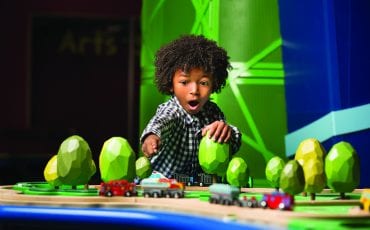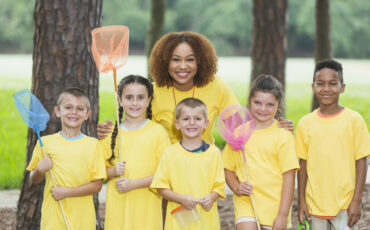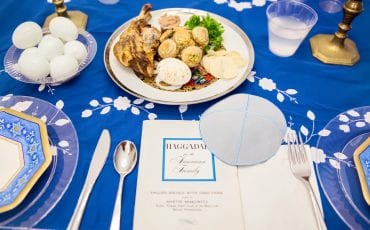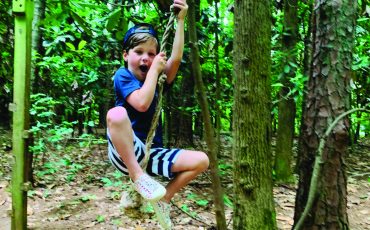Day 18: June 18
Table of Contents
Activity: Exploring Shadows and Puppetry at Home
 Materials:
Materials:
Flashlight and transparent, translucent, and opaque objects (several of each)
Examples: saran wrap and clear plastic bottle (transparent), leaves and tissue (translucent), book and backpack (opaque)
Procedure:
1. Ask your child: what is a shadow? Define the word: “the dark figure cast on a surface by a body that is between the surface and the light” (Merriam-Webster’s Word Central online dictionary: http://wordcentral.com/). When can you see your shadow? When can you not see your shadow?
2. Share with your child the information that shadows and light have been used to create puppet theatre (puppet shows) for hundreds of years, all over the world! Shadow puppets are usually flat silhouettes, made from animal hide, or from cardboard or plastic. The figures have rods or sticks on the parts that need to be moved, and the joints are made from string or wire or metal brads (paper fasteners). Examples can be found in many countries, with each country having their own unique style of shadow puppetry. French shadow puppetry features realistic characters that tell stories of war and heroism. Chinese shadows are colorful and delicate and feature many moving parts; Javanese shadows are highly stylized and symbolic. The Center for Puppetry Arts employs shadow puppetry in their puppet shows, too, using the same techniques and inspirations that shadow puppet artists have been using throughout the centuries!
3. Mention that different types of materials/objects cast different types of shadows, and that we’ll be exploring three types of objects in this activity:
Transparent: light easily passes through these objects
Translucent: only some or a little bit of light passes through these objects
Opaque: light is blocked from passing through these objects.
4. Predict as to which objects fall into which categories (which will cast shadows and which will not). Chart the results.
5. Darken the room and give your child a flashlight. Let him/her shine the flashlight on objects in the room to see which ones will make a shadow and through which objects the light will shine. The light will shine through transparent objects like saran wrap or clear plastic bottles. Some light will pass through translucent objects like leaves or tissue. No light will pass through solid opaque objects like books and backpacks. Compare results with predictions charted earlier.
6. Let kids experiment with objects that are partially opaque and partially transparent. Fans are great examples: the holes in the fan allow the light to pass through creating interesting patterns. Move the flashlight around on the fan to change the shape of the shadow.
7. You can also place other objects in front of the light to create strange shadows. Have the kids try to guess what the object is. Move the objects closer to the light and then farther away from the light. How does the distance from the light change the shape and clarity of the shadow?
8. Use the different objects and materials to create your own shadow puppet play. Also try making hand shadows—examples found online at http://www.internetfamilyfun.com/sitesforkids/handshadows.htm.
Additional Resources
BOOK: Haines, Ken and Gill Harvey. The Usborne Book of Puppets. ISBN 0746027230
WEBSITE: http://www.shadow-puppets.com
Contest Prize:
Family 4 Pack of Tickets to “The Little Mermaid”
Click Here to Enter








Leave a Reply